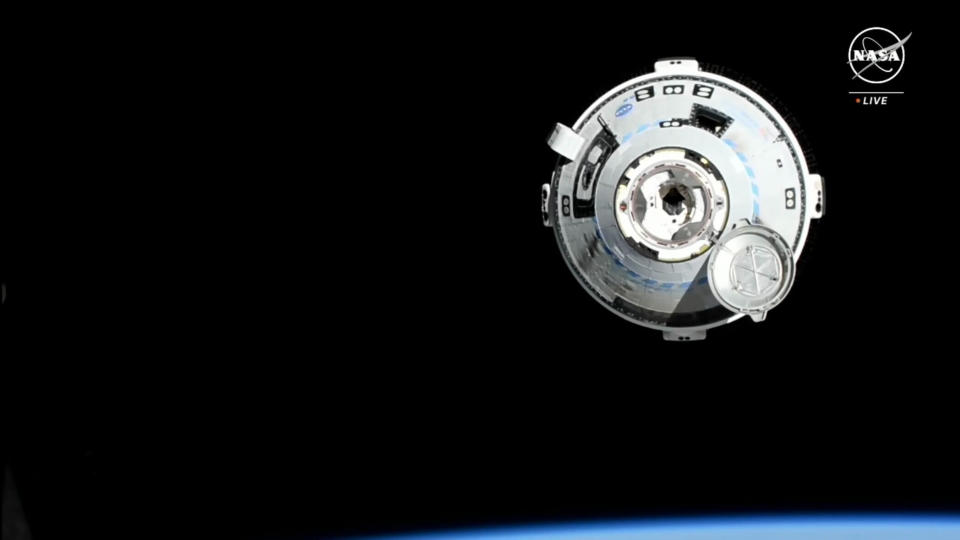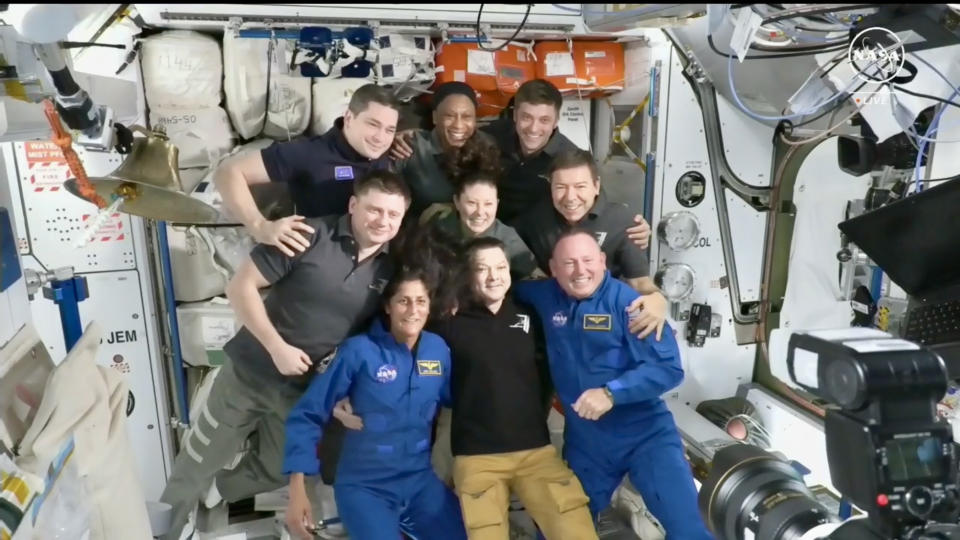NASA astronauts had to wait as they tried to dock Boeing’s first manned Starliner spacecraft to the International Space Station on Thursday, June 6.
The five aft thrusters in the Starliner service module were disabled. And that was after flight controllers found workarounds for two new helium leaks in addition to one the spacecraft already had. Additionally, the cooling system was using more water than expected, and another helium leak would be detected after the Starliner docked with the space station.
So what gives? Why all the glitches?
NASA and Boeing are not worried. After all, Starliner’s mission to the ISS, Boeing’s Crew Flight Test, is a test flight in both name and nature. This mission is the sixth mission in history in which NASA astronauts have flown a brand new spacecraft for the first time. It was a giant step forward for Boeing to finally reach the ISS with astronauts after its first uncrewed test flight failed in 2019, but that crewed flight was delayed by more problems.
What about these glitches? So far NASA and Boeing have surpassed them.
The Starliner docked at the ISS a little more than an hour later than planned, after manual flights by NASA astronauts Butch Wilmore (mission commander) and Sunita Williams (pilot) helped Boeing engineers recover four of the five down thrusters. The fifth will be disabled for the remainder of the mission, but the glitch, which may be in the Starliner’s software rather than the thrusters themselves, will not pose a risk to return to Earth.
Relating to: Boeing Starliner 1st astronaut flight: Live updates

Boeing said astronauts refilled the water tank in the cooling system from an onboard source, and future vehicles will carry a larger tank from the start. As for helium leaks, Starliner has a sufficient supply of gas for the remainder of the mission, but Boeing engineers still want to understand why they occur.
“We have two problems with this vehicle right now, helium leakage and figuring out how to fine-tune these thrusters so they don’t get selected,” Boeing Starliner program manager Mark Nappi told reporters at a press conference Thursday evening. “These are actually pretty minor issues and we’ll sort them out before the next mission.”
NASA’s Steve Stich, who oversees the agency’s Commercial Crew Program, compared Boeing’s Starliner flight to the agency’s first space shuttle mission, STS-1, which launched astronauts John Young and Bob Crippen into orbit in 1981.
“I would say some of the challenges we face are very similar to the space shuttle,” Stich said. He added that the glitch in the water cooling system was strikingly similar to the problem NASA encountered on shuttle flights throughout the 30-year program.
Meanwhile, Wilmore and Williams spend a full week or more on the space station; Here they’ll test everything from how comfortably the Starliner sleeps and how well it can accommodate a crew of four astronauts (its nominal complement) to how the capsule functions. A safe haven in case of an emergency at the station.
“Since they are only scheduled to be there for a relatively short period of time, we’re running them much harder than our ISS crew,” NASA’s Emily Nelson, Starliner’s chief flight director for Crew Flight Test, told reporters. “There are too many payments.”
Most of these tests are aimed at preparing the station and the Starliner program for Starliner 1, the first of at least six astronaut taxi flights Boeing is making for NASA under its $4.2 billion Commercial Crew Program contract. This mission is expected to begin in early 2025. Boeing is one of two companies signed multibillion-dollar contracts to fly NASA astronauts to and from the ISS. The other, SpaceX, has already flown eight missions for NASA with its Crew Dragon spacecraft.


RELATED STORIES:
— Meet the crew on Boeing’s 1st Starliner astronaut flight
— 2 astronaut taxis: Why does NASA want both Boeing’s Starliner and SpaceX’s Dragon?
— SpaceX congratulates Boeing, ULA on the first manned Starliner launch
ISS flight controllers can use the station’s robotic arm cameras to inspect affected thrusters on Starliner if any problems can be detected that way, Nelson said. Because the thrusters are in the service module of the Starliner that was launched before reentry, Boeing will not be able to retrieve it for operation on Earth.
Still, NASA and Boeing are confident that the thruster failure during docking will not pose a major threat. Many thrusters likewise failed during Boeing’s second unmanned flight test to reach the space station in 2022, Stich said.
“I think we’re not worried about all the thrusters,” Stich said, adding that those affected in the 2022 flight performed well after recovery. “Those thrusters did well after we brought them back.”
Wilmore and Williams are willing to work to speed up Starliner.
As the astronauts glided from the Starliner toward the ISS, they were warmly greeted by the ringing of a ship’s bell, weightless dancing and hugs from all around the station’s seven-person Expedition 71 crew, representing the United States and Russia. NASA said they had at least until June 14, or even a little longer, to complete their work, and that they only had one day off during that time.
“We are ready to work for international partners here,” Wilmore said. “Do whatever you order us to do. We are ready.”